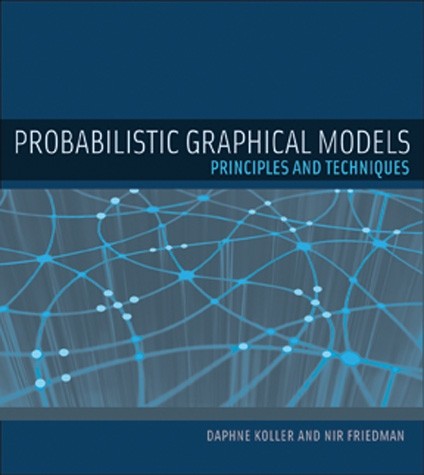Structure Learning: Likelihood Scores
Written on August 7th, 2020 by Sergei Semenov
Using Likelihood scores to find best structure
Likelihood Structure Scores lecture introduces the likelihood scores. The overall concept is quite clear: we can evaluate, how good is a random graph, if we use its structure to estimate some data (using MLE, of course).
What I find exciting here is the following:
- one can see a certain strong connection between Machine Learning and Information Theory.
- if two graphs have a very similar score, can we run inference in a sparser graph instead of inference in other more complex graphs?
- inference optimization can be replaced by another type of optimization, e.g. with a focus to memory
Decomposible score theorem
Theorem says, that:
\[\operatorname{score}_{L}(\mathcal{G}: \mathcal{D})=M \sum_{i=1}^{n} \mathbf{I}_{\hat{P}}\left(X_{i} ; \mathbf{P a}_{X_{i}}^{G}\right)-M \sum_{i=1}^{n} \boldsymbol{H}_{\hat{P}}\left(X_{i}\right)\]Property
Let’s assume, that \(G_0\) is a graph, where all variables are independent. The likelihood score can be written as:
\[\operatorname{score}_{L}(\mathcal{G_0}: \mathcal{D})= - M \sum_{i=1}^{n} \boldsymbol{H}_{\hat{P}}\left(X_{i}\right)\]Let’s connect a pair of nodes (e.g \(X_i\) -> \(X_j\)). Denote new graph as \(G_1\). The likelihood score will be:
\[\operatorname{score}_{L}(\mathcal{G_1}: \mathcal{D})=M \mathbf{I}_{\hat{P}}\left(X_{i};X_{j}\right)-M \sum_{i=1}^{n} \boldsymbol{H}_{\hat{P}}\left(X_{i}\right)\]If can be seen, that one connection adds contribution that is equivalent to exactly \(M\mathbf{I}_{\hat{P}}\left(X_{i};X_{j}\right)\).
If \(X_i \perp\!\!\!\perp X_j\), then \(\mathbf{I}_{\hat{P}}\left(X_{i};X_{j}\right) = 0\) and we get the same likelihood score as for graph \(G_0\).
Does direction plays role?
The direction doesn’t play any role. But if the parents list was affected(!), the likelihood score changes
Interesting facts
\(\mathbf{I}_{\hat{P}}\left(X_{i}\right) = 0\) and \(\mathbf{I}_{\hat{P}}\left(X_{i};\emptyset\right) = 0\)
Last update:16 August 2020